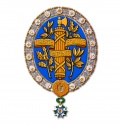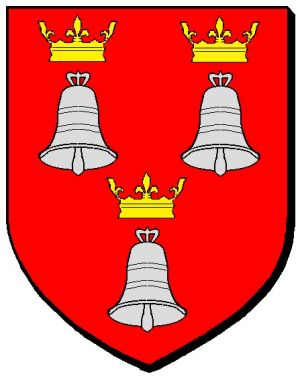Saint-Boingt: Difference between revisions
Jump to navigation
Jump to search
Knorrepoes (talk | contribs) m (Text replacement - "{{media}} Literature : Image from http://www.armorialdefrance.fr" to "Literature : Image from http://www.armorialdefrance.fr {{media}}") |
Knorrepoes (talk | contribs) m (Text replacement - "Literature : " to "'''Literature''': ") |
||
| Line 21: | Line 21: | ||
In the 18th century, the local school teacher, who was also a musician, had three bells placed in the bell tower to ring the bells at ease. The three crowns come from those which surmount each of the altars of the church. | In the 18th century, the local school teacher, who was also a musician, had three bells placed in the bell tower to ring the bells at ease. The three crowns come from those which surmount each of the altars of the church. | ||
[[Civic Heraldry Literature - France|Literature]] : Image from http://www.armorialdefrance.fr | [[Civic Heraldry Literature - France|'''Literature''']]: Image from http://www.armorialdefrance.fr | ||
{{media}} | {{media}} | ||
Revision as of 15:35, 9 September 2022
French heraldry portal
This page is part of the French heraldry portal |
Heraldry of the World |
|
French heraldry:
Overseas territories:
|
Selected collector's items from France:
|
SAINT-BOINGT
Département : Meurthe-et-Moselle
| French |
De gueules à trois cloches d'argent chacune surmontée d'une couronne d'or. |
| English | No blazon/translation known. Please click here to send your (heraldic !) blazon or translation |
Origin/meaning
In the 18th century, the local school teacher, who was also a musician, had three bells placed in the bell tower to ring the bells at ease. The three crowns come from those which surmount each of the altars of the church.
Literature: Image from http://www.armorialdefrance.fr
Contact and Support
Partners:
Your logo here ?
Contact us
© since 1995, Heraldry of the World, Ralf Hartemink 
Index of the site












